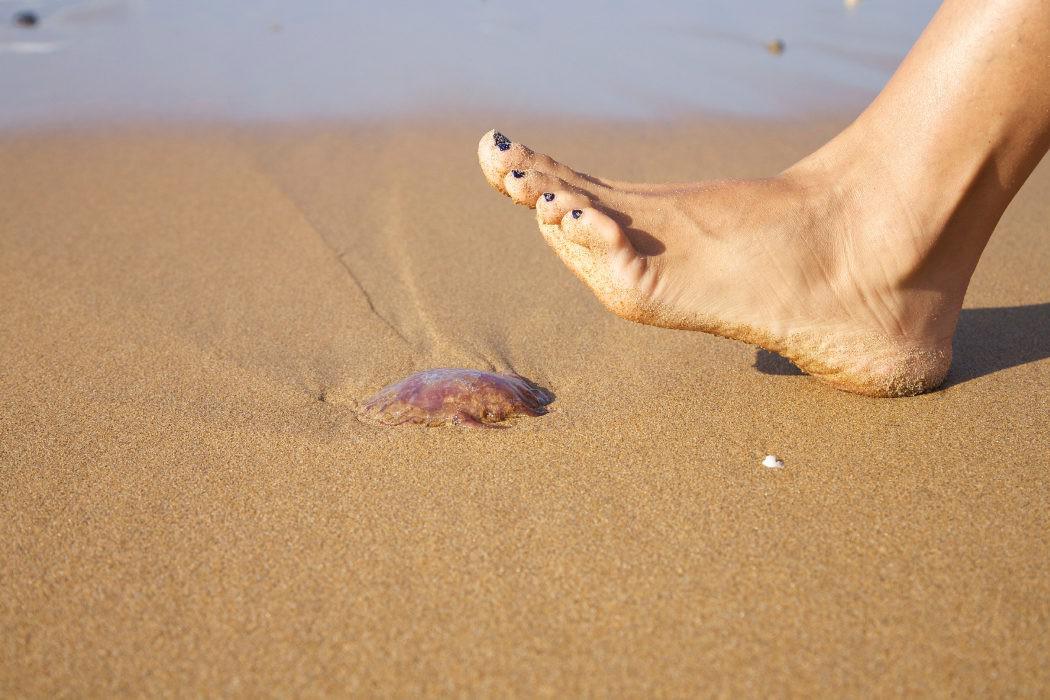Should we be worried about ticks on LA beaches? What to do to enjoy safely
For years, hikers have worried about ticks and the Lyme disease they can carry. Now a new study, based on fieldwork done in the San Francisco Bay Area, has some scientists thinking there may be more disease-carrying ticks near beaches than we thought. The news coincides with the beginning of summer.
Should we worry in Southern California? And, in any case, what can we do to stay safe?
The first thing to remember is that disease-carrying ticks do not hide under a beach blanket. "They're not going to be in the arena, obviously," said Dr. Raphael Stricker, medical director of Union Square Medical Associates, in San Francisco, who also serves as medical director of lymedisease.org and sits on the Alzheimer's Disease Advisory Committee. Lyme from the California Department of Public Health.
There are a lot of forms of protection to think about if you're hiking where there's sand, Stricker added, but "once you're on the beach, you're probably going to be fine."
AdDaniel J. Salkeld of Colorado State University wrote April 23 in the journal Applied and Environmental Microbiology about the finding of "a surprising diversity of tick-borne pathogens" in the coastal chaparral areas of Marin and Sonoma.
Travels
However, that doesn't mean anything has changed in Southern California. “We have not heard anything about the increase in the tick population on our beaches. From what we've read from the study in Northern California, it appears that the ticks were found in the brush and vegetation that beachgoers walk through to get to the sand, but not in the sand itself," said Nicole Mooradian, spokesperson for the Los Angeles County Department of Beaches and Harbors. "Our beaches are mostly sandy and there is little vegetation for visitors to walk on."
At the Orange County Mosquito and Vector Control District, communications director Lora Young said that since 1989 the agency has tested more than 18,000 ticks for the bacteria that causes Lyme disease and no test has emerged. positive since 1991. So far this year, the agency has tested 1,381 ticks, all negative for the disease, it said.
Ticks suck blood from humans and animals, including lizards, rodents, deer, dogs, and horses. They often wait in leaves or grass, then transfer to humans and animals as they pass by.
Salkeld and his co-authors noted in the study that "outdoor recreation in Southern California has a lower risk of exposure to tick-borne disease than in Northern California." His tick inspection never ventured south of Monterey County.

#ICYMI Salt w/o Pepper on @WUSA9 @GreatDayWash (Chef Tee was out sick). Part 2: Brian shows host @AndiHauser how to… https://t.co/kmf03OD2VJ
— Salt & Pepper Sun Nov 18 21:05:53 +0000 2018
But those who walk to beaches and through coastal forests, grasses or chaparral may encounter ticks, including the so-called western black-legged tick, which can spread Lyme disease.
What preventive measures can be taken? County and state public health websites include these and other tips:
Lyme disease was first diagnosed in the 1970s in Lyme, Connecticut, according to the University of California Integrated Pest Management Program website. From 2005 to 2014, California authorities reported 57 to 97 cases per year statewide. In Los Angeles County, 20 to 30 suspected cases are reported each year, according to the county's Department of Public Health. Its website notes that fewer than 10 cases per year have been confirmed, most of which involve people who contracted Lyme disease outside of the county.
But many Lyme disease sources point out that the often difficult-to-diagnose affliction can be underestimated or misclassified. Symptoms over time can include rashes, headaches, arthritis, facial paralysis, and nerve pain.
"Lyme disease risk is really hard to define these days, because we've found it in every state and in every kind of setting," Stricker said.
The Western Los Angeles County Vector-Borne Epidemiology and Vector-Borne Disease Control District said the western black-legged tick is one of the most abundant of the nine varieties found in California, and the most closely related to the Lyme's desease. They can also be as small as a poppy seed.
The idea that ticks live near the beach "is nothing new," Stricker added. “They like that kind of thicket that is close to the ocean, because there is a lot of humidity.”
In this region, the youngest ticks (nymphs) usually emerge in January and February, instead of May or June as in the rest of the country, she explained. Similarly, peak tick season in this region often ends before mid-summer because "when it's really hot [and the weather is dry], it's harder for them to move."
To read this note in English, click here.


























'The ambassador's daughter': everything about the premiere of the Nova series
18/03/2022A girl named Melek arrives in her living room and finds a dead man. Her mother, in the bathroom, cleans the blood from her clothes and her face, in addition, she keeps a knife along with the rest of the things in ...